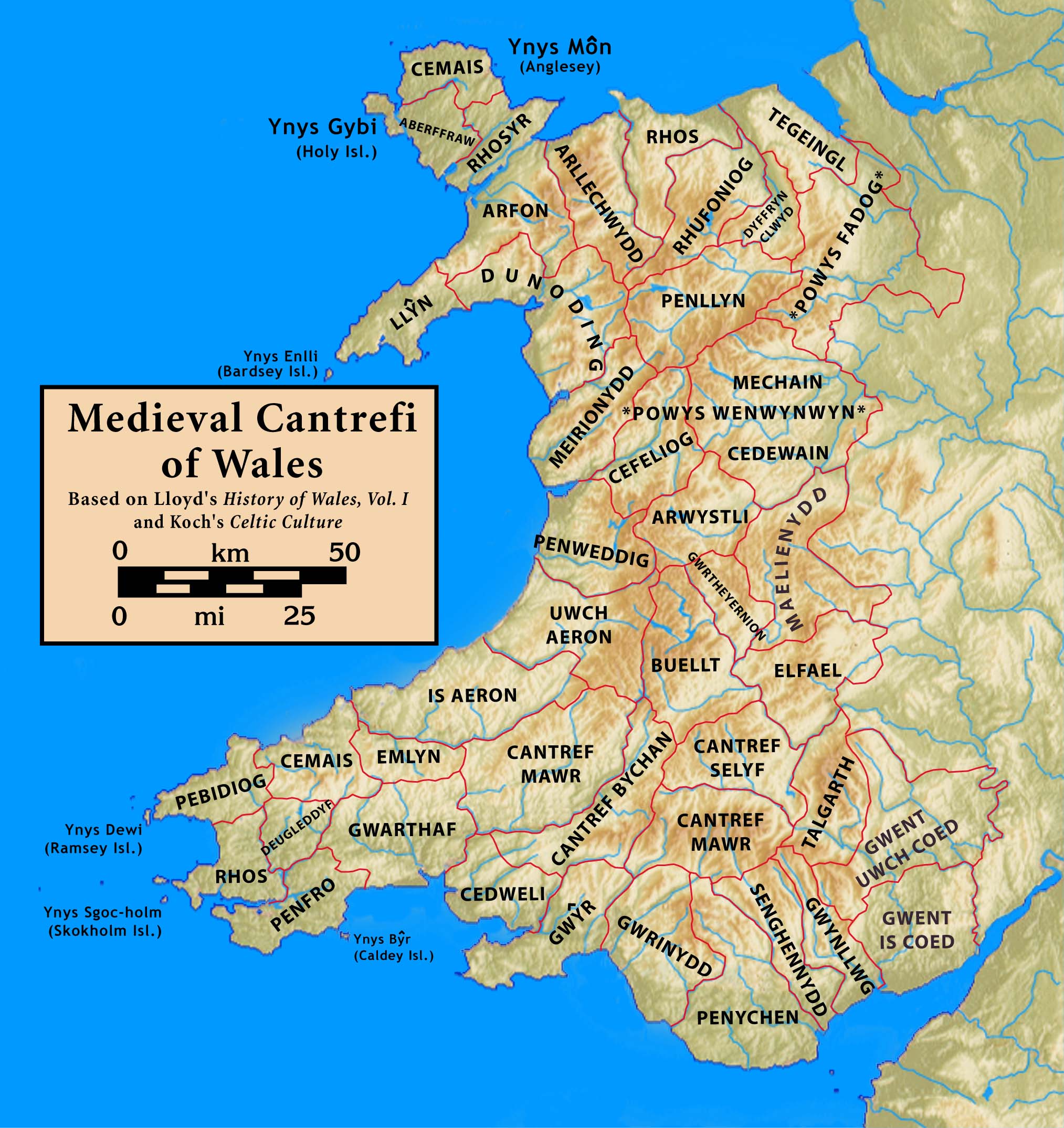|
Buellt
Buellt or Builth was a cantref in medieval Wales, located west of the River Wye. Unlike most cantrefs, it was not part of any of the major Welsh kingdoms for most of its history, but was instead ruled by an autonomous local dynasty. During the Norman era it was associated with Rhwng Gwy a Hafren, a region independent of the Welsh monarchies and controlled by Norman Marcher Lords. In the 16th century, it was reorganized as a Hundred (country subdivision), hundred and joined with the former kingdom of Brycheiniog to form the county of Brecknockshire. Description The name ''Buellt'', also rendered ''Buallt'', comes from the Welsh words ''bu'', meaning "ox", and ''gellt'' (later ''gwellt''), meaning pasture. This was later anglicized to ''Builth'', as in the modern town of Builth Wells. Situated in the valley of Afon Irfon, Buellt's boundaries were roughly the Cambrian Mountains to the north, the River Wye to the east, the Mynydd Epynt range to the south, and Ceredigion to the west. ... [...More Info...] [...Related Items...] OR: [Wikipedia] [Google] [Baidu] |
Cantrefi
A cantref ( ; ; plural cantrefi or cantrefs; also rendered as ''cantred'') was a medieval Welsh land division, particularly important in the administration of Welsh law. Description Land in medieval Wales was divided into ''cantrefi'', which were themselves divided into smaller ''cymydau'' (commotes). The word ''cantref'' is derived from ''cant'' ("a hundred") and ''tref'' ("town" in modern Welsh, but formerly used for much smaller settlements). The ''cantref'' is thought to be the original unit, with the commotes being a later division. ''Cantrefi'' could vary considerably in size: most were divided into two or three commotes, but the largest, the ''Cantref Mawr'' (or "Great Cantref") in Ystrad Tywi (now in Carmarthenshire) was divided into seven commotes. History The antiquity of the ''cantrefi'' is demonstrated by the fact that they often mark the boundary between dialects. Some were originally kingdoms in their own right; others may have been artificial units created later ... [...More Info...] [...Related Items...] OR: [Wikipedia] [Google] [Baidu] |

